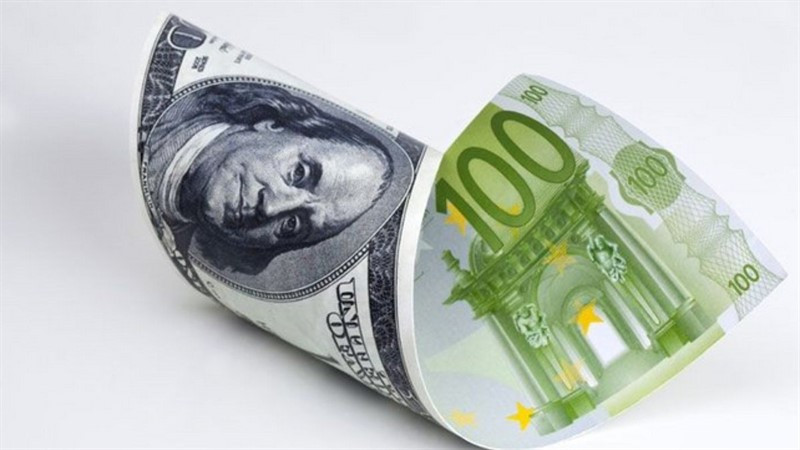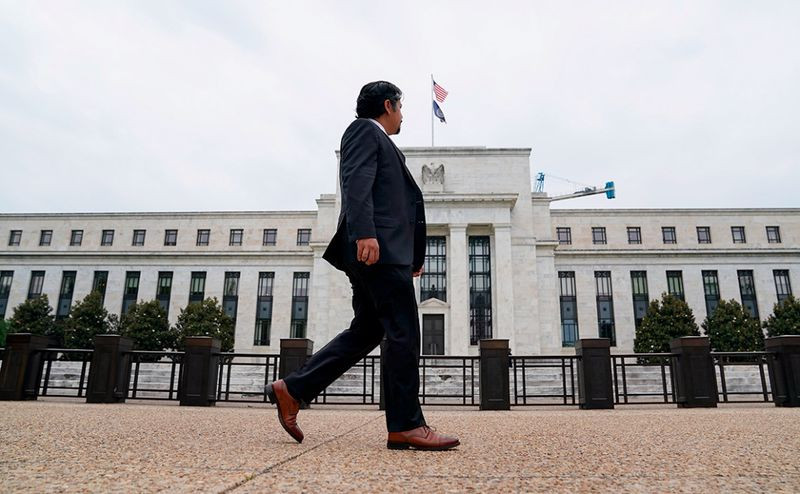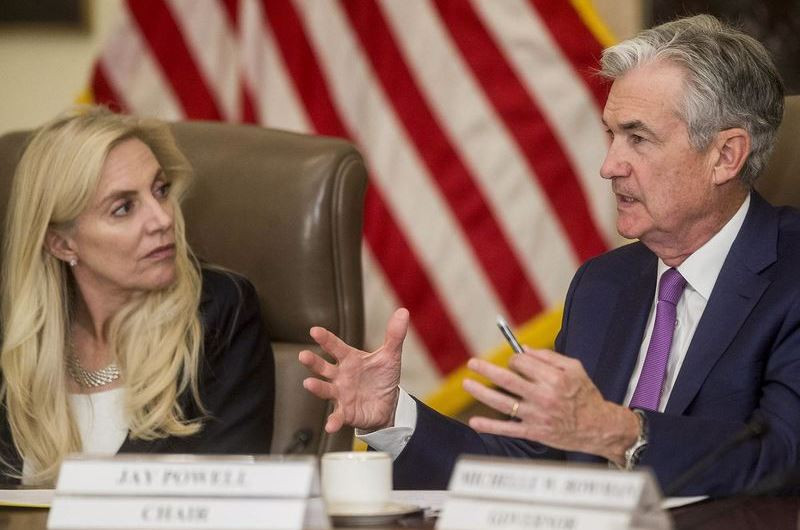
The rapid rise in inflation in the United States, in theory, was supposed to send the US currency into a peak. However, nothing of the kind happened. The dollar, which has gained strength, has already pushed the EUR/USD pair to 16-month lows. Since the summer, it has been trading within the framework of a steady downward trend, and since the beginning of this year, the dollar has become heavier against the euro by almost 900 points.
Given that inflation in the EU is significantly lower than in the US (4.1% versus 6.2% in October), and the debt burden of the currency bloc's economy is also less: in 2020, the level of public debt to eurozone GDP was 101.7%, in America - 108%, everything should be the opposite. However, the COVID-19 pandemic turned everything upside down.
In addition, the European Central Bank remains one of the most dovish central banks. While her G10 colleagues are taking important steps to normalize monetary policy, ECB President Christine Lagarde says that any tightening of the monetary rate will do more harm than good.
Meanwhile, inflation fears continue to fuel the growth of the yield of treasuries, which supports the dollar, and in such conditions, the euro remains extremely low chances of growth. Unless ECB officials start recognizing the possibility of a rate hike in 2022. However, expectations in this regard are currently being dashed by Lagarde's insistent assurances that the central bank will not rush to raise rates.
Thus, in the next six months or a year, we can expect the trend of weakening of the single European currency against the dollar to continue.
UBS strategists predict that by the end of 2022, the EUR/USD pair may fall to 1,1000.
"The reasons are that the Fed is ahead of other major central banks in terms of monetary policy normalization. In addition, the slowdown in global economic growth favors the dollar against the currencies of countries more export-oriented, such as the eurozone," they noted.
At the same time, according to analysts, it is not worth waiting for the single currency and the greenback to reach parity.
To implement such a scenario, a combination of the following factors is necessary: inflation in the eurozone will accelerate, and the dynamics of European macroeconomic indicators will worsen. At the same time, the ECB will keep the parameters of an ultra-soft monetary policy unchanged (interest rates in the eurozone will remain at near-zero and even negative levels). In parallel with this, the Fed will begin to actively raise the key rate.

So far, investors continue to wonder what steps the US central bank will take in connection with the acceleration of inflation in the country since 1990, and are still actively buying shares, hoping that they will be supplied with free money for a long time.
However, there is no free cheese in a mousetrap. In response to the statements of the Federal Reserve leadership that inflation is temporary, the CPI figures reach 0.9% on a monthly basis. At this rate, ordinary consumers will pay a hidden tax far from the amount calculated by the central bank 2-3% per annum, and at least around 7%, possibly higher.
The growth of inflation in the United States, in addition to widespread price pressure in supply chains, is also stimulated by low inventories, which greatly weaken the influence of the competition mechanism in restraining prices. This means that retailers may not need to lower prices during the Christmas season, which, along with increased demand, promises to accelerate inflation even more and makes it possible for prices to rise by 7% year-on-year in December.
"The threat posed by record high inflation for Americans is not 'transitory' and the situation is only getting worse. Wherever they go, from the grocery store to the gas station, Americans clearly see that the inflation tax is quite real, and Washington can no longer ignore the economic burden they feel every day," Senator Joe Manchin, a centrist Democrat, said last week.
The approval rating of the head of the White House Joe Biden is hitting anti-records, and rising inflation is one of the reasons.
The steady rise in inflation also confuses the Fed's plans to wind down monetary stimulus measures taken in the early stages of the pandemic, and exacerbates uncertainty about who will lead the US central bank next year. Biden has not yet said who will become chairman of the Fed after Jerome Powell's term expires in February.

"If Jerome Powell is chosen, we do not expect any impact on the dollar. But if Lael Brainard is chosen, we expect a short-term drop in US interest rates and the dollar, because it is widely believed that the FOMC under her leadership will be softer than otherwise," Commonwealth Bank of Australia experts said.
So far, the greenback does not think of slowing down, leaving the EUR/USD pair under pressure.
The USD index updated its annual highs on Tuesday, rising above 95.80.
The US currency was supported by positive data on the US.
Thus, retail sales in the country in October increased by 1.7% compared to September and against the forecast of 1.2%.
A separate report showed that industrial production in the United States grew by 1.6% last month compared to the previous month, which also exceeded expectations.
Market participants are betting on further strengthening of the dollar, expecting that inflationary records may require the US central bank to become hawkish faster.
Meanwhile, concerns about the prospects for the eurozone economy caused by rising energy prices and an increase in cases of coronavirus infection in the region are encouraging investors to increase short positions on the euro.
According to Eurostat, the eurozone's GDP, according to the second, final estimate, grew by 3.7% in annual terms last quarter. The value of the indicator coincided with the analysts' forecast and the first estimate.
It is obvious that the pace of recovery of the European economy has noticeably decreased – in the second quarter the annual rate was 14.2%.
"Taking into account the fact that a new wave of coronavirus is hitting Europe, and there is also evidence that consumers are becoming more cautious, negative changes in economic growth forecasts in the eurozone for the 4th quarter of 2021 /1st quarter of 2022 may follow, which will create some risks of depreciation of the single currency," analysts at Capital Economics believe.
The EUR/USD pair once again failed to rebound on Tuesday and turned to the downside.
"The nearest resistance is marked at 1.1513-1.1522, and further - at 1.1560. At the same time, any rebounds should face strong resistance at 1.1645 (a 5-month downward trend). As long as it restrains the bulls, the general mood in the pair will remain negative. A break below 1.1350 will make the bears target 1.1290 and then 1.1000 (Fibo levels of 61.8% and 78.6% of the 2020 correction)," Commerzbank strategists said.





















